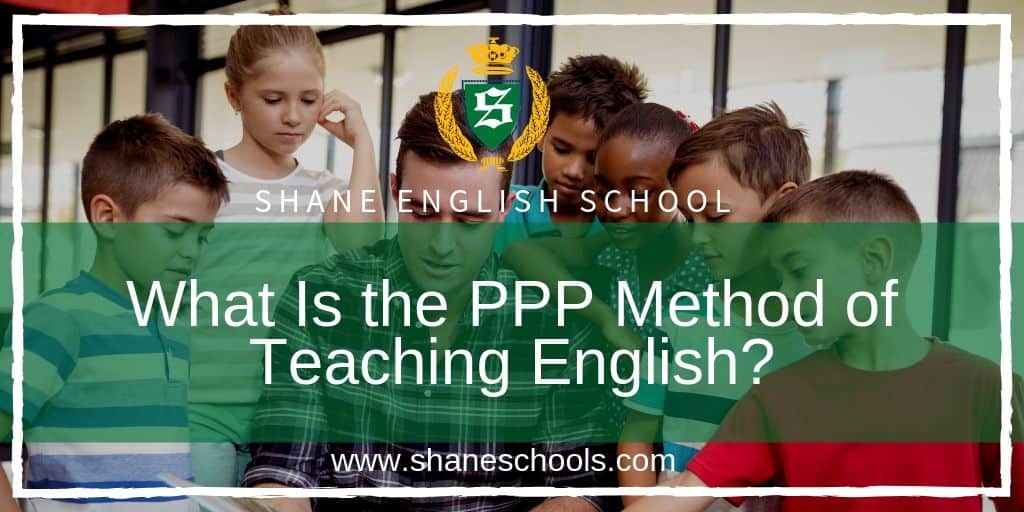The Presentation-Practice-Production (PPP or 3P) method is popular among new EFL teachers because it is straightforward and easy to implement. In fact, the PPP method follows common sense and does not require much advanced pedagogy. Most people have used some variation of the PPP method to learn at some point in their lives. And while the PPP method has its critics, its elegance as a foundation cannot be denied. It is even the recommended system in Cambridge’s Certificate in English Language Teaching to Adults (CELTA).
Phase 1 of the PPP Method: Presentation
This is the part of the process that is most passive for the student. The teacher presents students with new information (e.g. a grammar point, a vocabulary list, etc.). It is important that this information be presented in sufficient detail.
The first part of presentation would be introducing the meaning of the new language. This could be a written definition, or a flash card, or a spoken description of a phrase or idiom’s meaning.
Next, the teacher must use clear examples so that students can see correct usage. An example might be a sample dialogue or a sentence written on the board, but students will need to see the new language being used naturally.
Finally, the teacher needs to confirm that presentation is successful and that the students understand the new language. At its simplest, this part of the PPP method is simply asking students to confirm that a particular example is correct, though teachers can use a more elaborate activity at their discretion.
Click here for a better look at the PPP Method’s presentation phase.
Phase 2 of the PPP Method: Practice
Also called drilling, this phase is to fully reinforce the new language. This is where teachers are likely to insert worksheets or games (maybe like the games found here, here, or here). Games are always a fun option when it comes to practice, and they are the preferred drills in Shane English School classrooms, but worksheets, scripted conversations, and reading exercises sometimes take the place of a game in other institutions.
The practice phase can be long, containing multiple activities to best reach the entire class. There’s a good chance that this takes up more time than any other phase of the PPP method. However, drilling can also be brief if the new language is simple and easy for a particular class to grasp. At this point, it is up to the teacher to determine the best course of action based on the needs of the students.
Click here for more details on the PPP Method’s practice stage.
Phase 3 of the PPP Method: Production
The third and final phase of the PPP method is production. This is where the students use what they have just learned to synthesize new examples, either in written or spoken form. (In the case of phonics and reading lessons, reading unfamiliar or challenging words could also qualify as production.) Testing would also be considered production, especially if it requires production of language elements in new configurations.
However, it’s important to note that the production phase of the PPP method is likely to be the most challenging to low-level beginners or extremely young learners. Students without a firm foundation in English will not have enough “building blocks” to synthesize their own language. In these cases, the production phase of the PPP method would take a back seat to additional practice until the students are at a high enough level to construct their own sentences.
Click here to see some tips for the production phase of the PPP Method.
Alternatives to the PPP Method
Though the PPP method is intuitive and easy for teachers to apply, there are other options as well. Task-based learning (TBL) is one such option. You can see our introduction to task-based learning (TBL) here. There is also the engage-study-activate, which bears many similarities to the PPP method.
In the end, it’s likely to be a combination of teaching processes that best accommodate the variety of learning styles a teacher is likely to encounter in the classroom.
What do you do? Do you use the PPP method or some other approach? Get in touch with us on Twitter (@ShaneSchools) and let us know!
About the Author
Daniel Howard has been working Taiwan as an EFL teacher and writer in the English-education industry for the past 11 years. He has taught students of all ages and abilities using a variety of methodologies. Currently, he is the Group Social Media Manager for the Saxoncourt Group.

We're hiring!
With schools around the world, Shane English School always has exciting new opportunities to offer.


